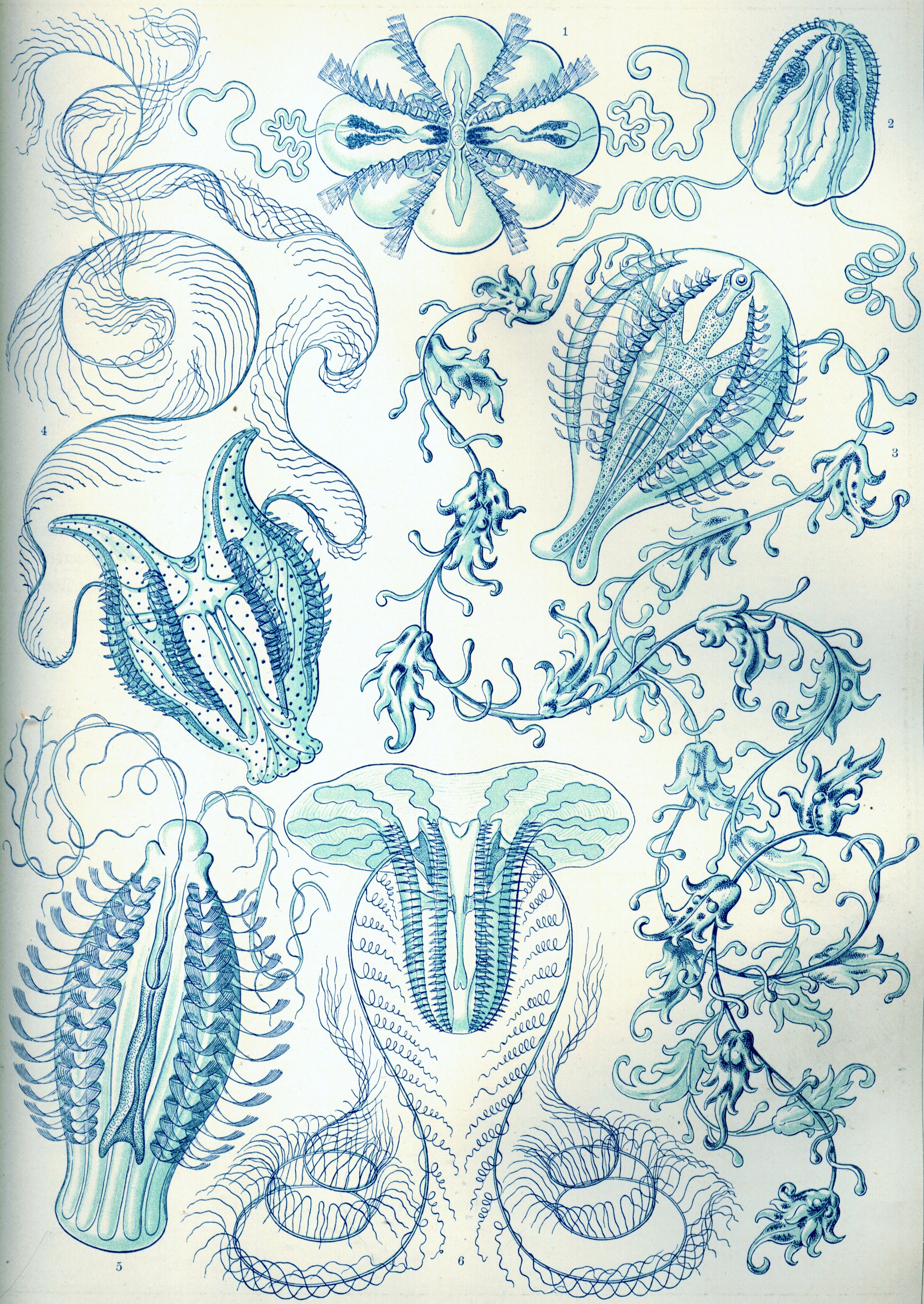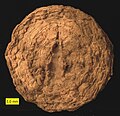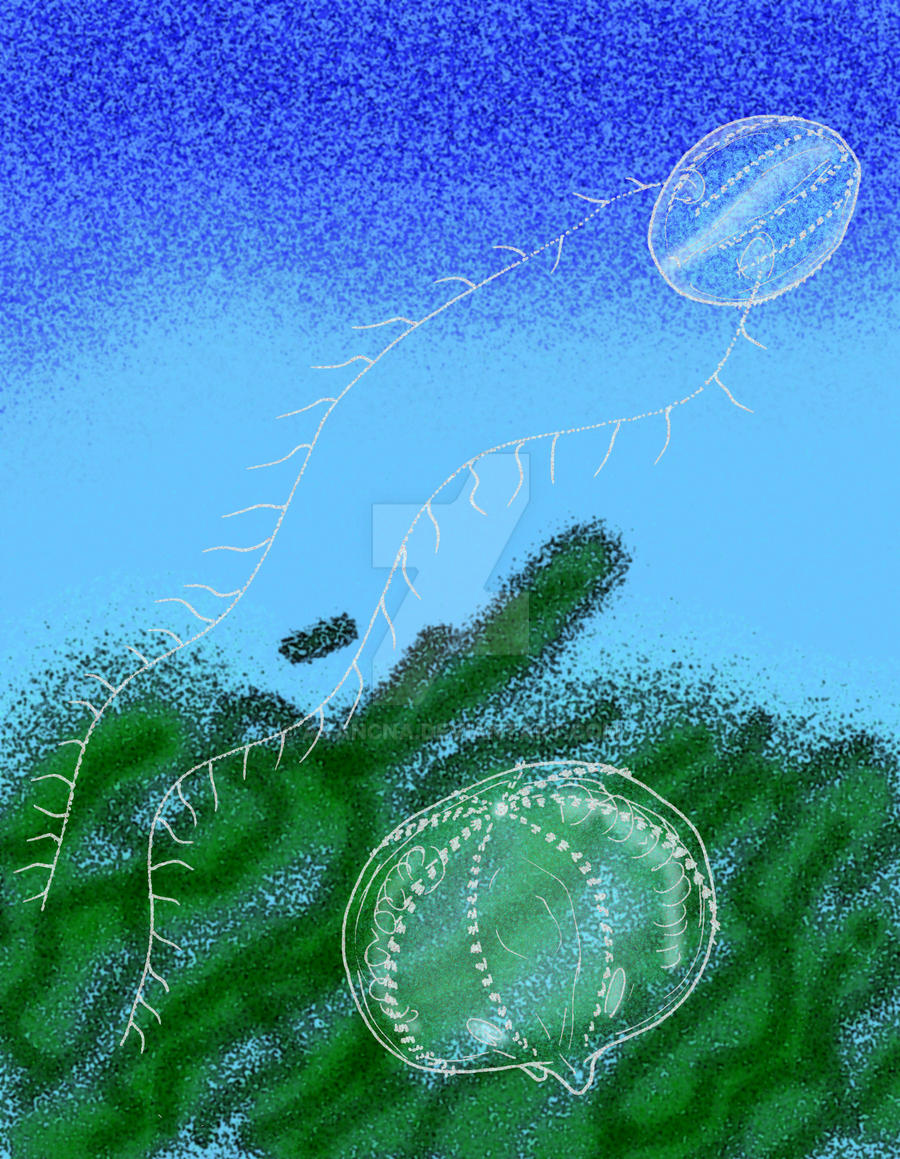Archaeocydippida
- Hunsrück, Germany
Archaeocydippida hunsrueckiana is a fossil preserved only type of comb jellies ( Ctenophora ). It was first described in 1987 by George D. Stanley Jr. and William striker after radiographs. Your interpretation of the fossil was attacked by the paleontologists M. Otto, who even went so far as to call Archaeocydippida hunsrueckiana as a non- living object. The paleontologist Simon Conway Morris and Desmond H. Collins, however, confirmed the interpretation as a jellyfish.
The genus name is derived from the constituents of archeo for " old " and cydippida for the order Cydippida from which Artepithet refers to the location in the Hunsrück, a German low mountain ranges.
Locality
The fossil was discovered in stereo radiographic examinations with X-rays in slate from the Emperor mine at the federal Bach in the Hunsrück. It was created by the replacement of organic sulfur compounds by the mineral pyrite. Although it is in worse state of preservation as originating from the same archaeological site type Paleoctenophora brasseli can be much better recognize some details such as the comb plates of comb ribs. The only known specimen of this species is now in the collection of the Bavarian State Museum.
Features
The approximately 23 -millimeter specimen reveals in which tentacles arise that leave the body at the mouth opposite side paired tentacle sheaths. This is an important difference to Paleoctenophora brasseli where the tentacles come from the mouth end. The mouth itself is identifiable by a slight indentation.
The characteristic feature of Ctenophora, the comb fins, clearly identifiable and enables secure identification and analysis of the individual comb plates from which they are composed. The number of ribs is, according to the explorers as in modern species at eight.
Can be connected to the oral side of a comb row is arranged in rows, sometimes also represent clumped spherical structures that can be interpreted due to their similar shape and position carefully as gonads ( gonadal ).
Phylogeny
Archaeocydippida hunsrueckiana comes just like the way Paleoctenophora brasseli previously described from the same archaeological site from the geological period of the Devonian about 400 million years. Unlike some earlier findings from the Cambrian it is similar in its characteristics such as body shape and arrangement of tentacles already very clearly today Ctenophora and is already assigned to a modern order, the Cydippida within the Tentaculata class. The explorers go even cautious estimates that a classification into families Pleurobrachidae or Mertensiidae is possible.
Probably the Cydippida are, however, a polyphyletic taxon, that is, it is not a natural kinship group, which includes all descendants of their last common ancestor. If true, this would be the allocation to the Cydippida without statement. In particular, it would be so compatible that Archaeocydippida hunsrueckiana was a stem lineage representatives of all ctenophores.










